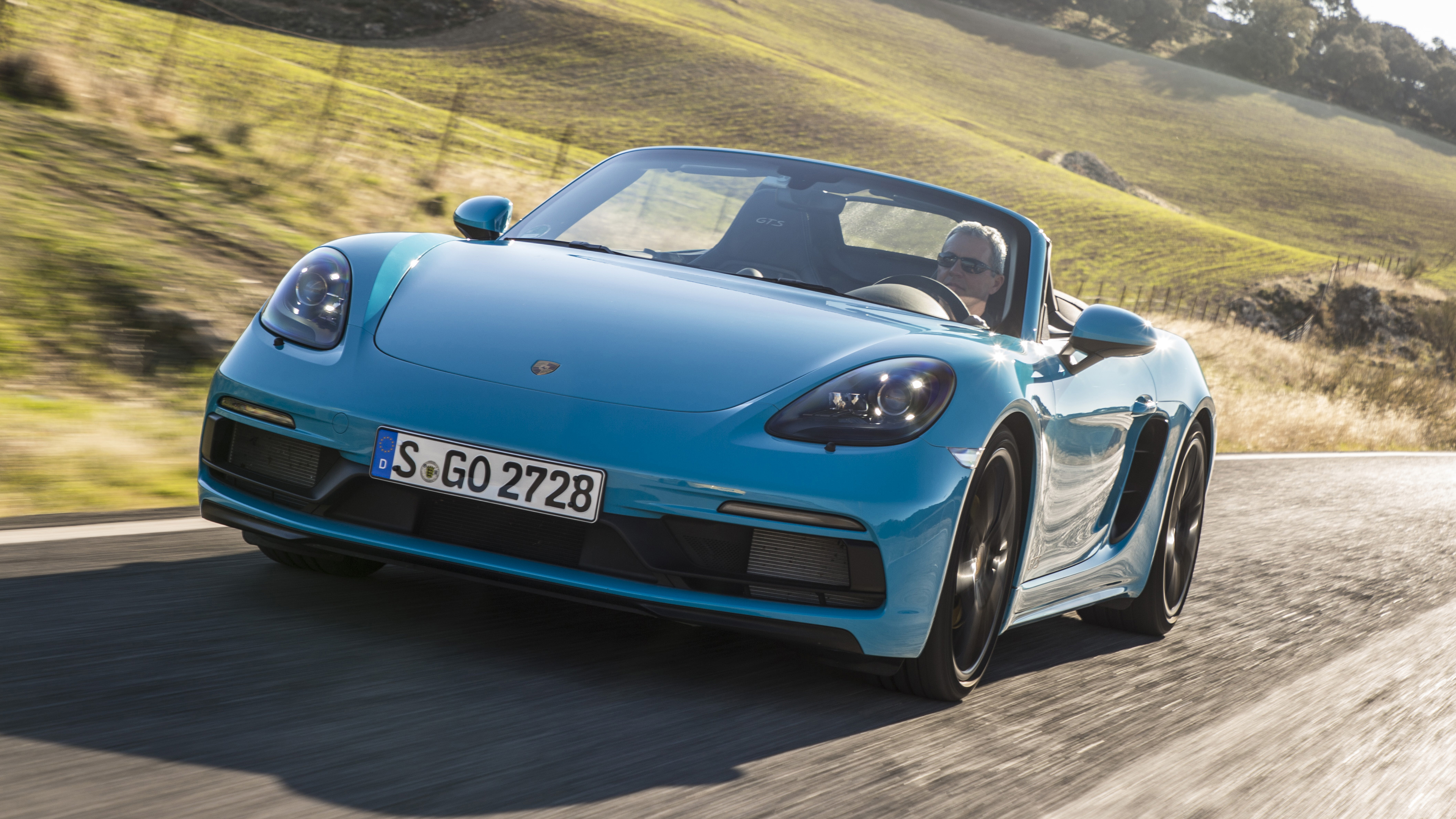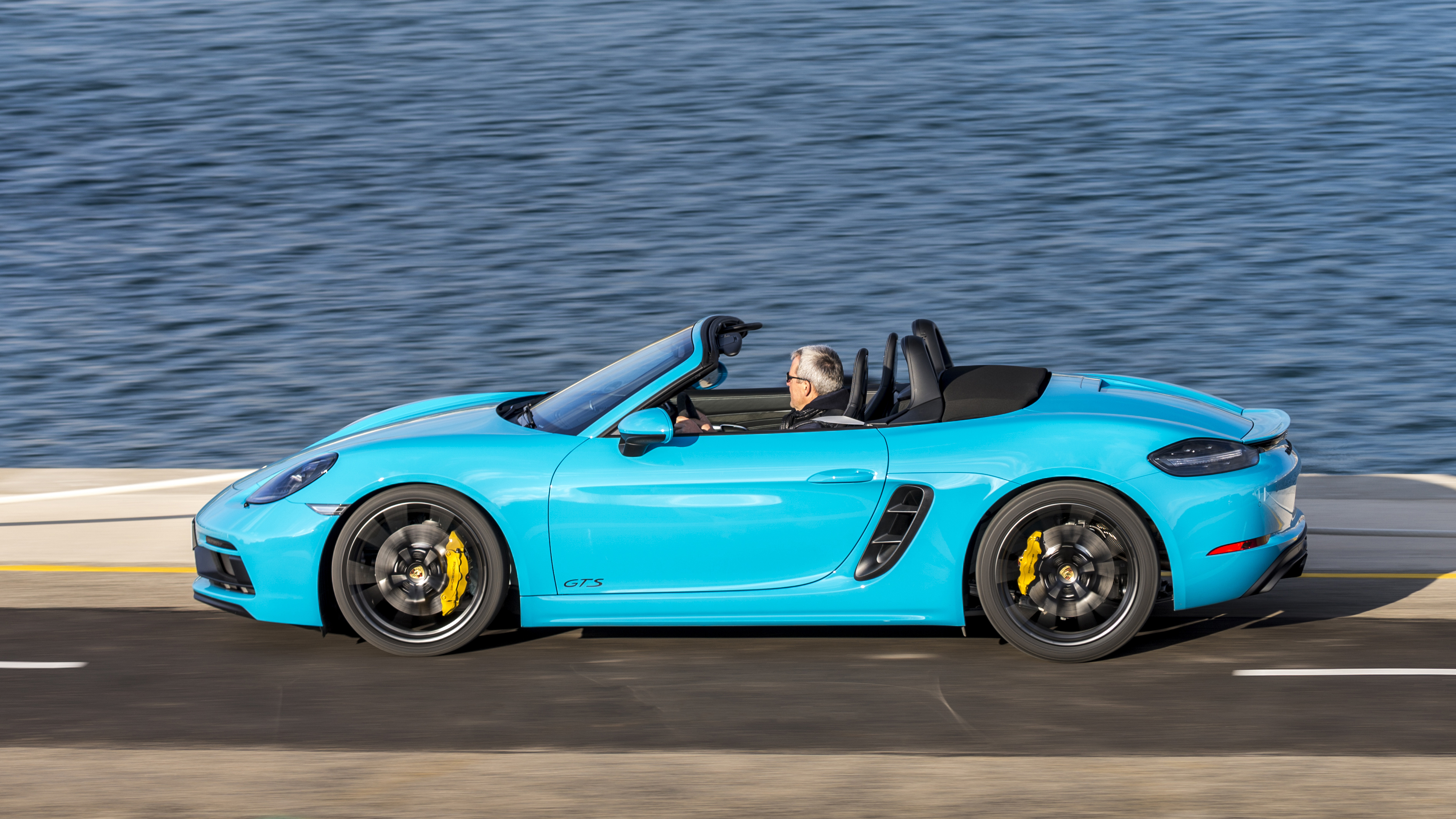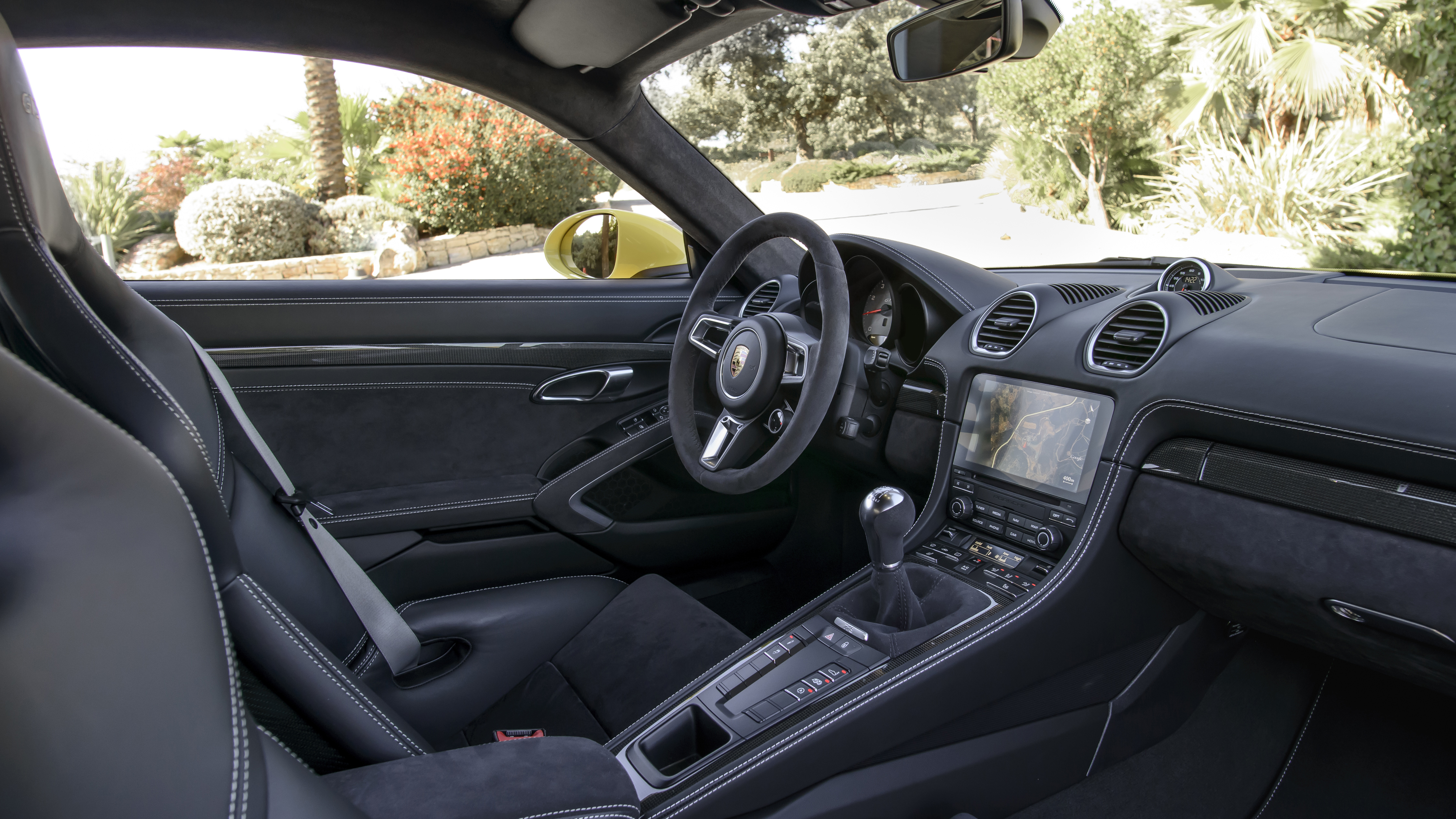
SPEC HIGHLIGHTS
- BHP
365bhp
- 0-62
4.9s
- CO2
210g/km
- Max Speed
180Mph
- Insurance
group49E
G, T and S are good letters.
Hell yeah. Porsches so labelled are traditionally the best of their respective model lines.
Want a 911? GT-cars and Turbos notwithstanding, you want the GTS. The Macan GTS is good fun too, and so were the last-gen Panamera and Cayenne GTS, with their fantastically unfashionable nat-asp V8 engines, comedy paint schemes (Peridot Green is especially silly) and interiors bedecked with more Alcantara than, erm, a thing with much Alcantara.
And before the Cayman and Boxster had two cylinders cruelly but necessarily liberated from their engines, transmogrifying them into 718s, it was the Cayman or Boxster GTS that we recommended. And, as a matter of fact, continue to over any brand new 718, if you can find a nice second-hand one with six cylinders.
You’re not still sore about the four-cylinder thing, are you?
A bit. But the time to complain has passed, we’d better just accept that ordinary Boxsters and Caymans will never again be powered by six-cylinders (GTs and Spyders? We live in hope). Time spent mourning the loss of the old one is counter-productive – Porsche knows we loved it, but they’re not bringing it back and nothing will make them. Well, not unless all four-cylinder engines are found to produce unusually large amounts of NOx or something.
Tell us about these new GTSs, then
For starters they get a little bit more power – their 360bhp is 15bhp more than a Cayman S or Boxster S and 35bhp more than the old, six-cylinder GTS. Cars equipped with the excellent seven-speed PDK transmission get a whopping 7lb ft more torque, whereas manual cars have the same 310lb ft as the S.
This is thanks to a more voluminous intake duct and a marginally more boosty turbocharger – pressure is up from 1.1 to 1.3 bar. Other than that it’s the same, turbocharged 2.5-litre flat-four engine you get in the normal S. 0-62mph takes 4.3 seconds with the PDK (down 0.1sec) or 4.6 seconds with the manual (down, um, 0.0sec) Top speed is 180mph, up from 177mph.
I was expecting more speed than this.
Top Gear
Newsletter
Thank you for subscribing to our newsletter. Look out for your regular round-up of news, reviews and offers in your inbox.
Get all the latest news, reviews and exclusives, direct to your inbox.
Sorry to disappoint, but in a world where a workaday Cayman or Boxster can already accelerate to 62mph in the low fours, there isn’t much room for Porsche to make the GTS faster still, leave room for the eventual GT4 and Spyder and not trample all over the 911. Besides – the GTS is plenty fast enough, even if it doesn’t feel any punchier than an S. Second gear is good for more than 70mph, for heaven’s sake.
So if the GTS isn’t about speed, what’s the point?
Porsche says the Boxster and Cayman GTS are “aimed particularly at drivers who love design and appreciate a vehicle that is ideally suited for everyday use, but do not want to sacrifice sportiness”.
So while there are a few “performance oriented features” like the power/torque hike, a lot of the changes are actually cosmetic or trim-based. Much is fitted you’d have to pay for on an S, and you get lots of special, often blacked-out trim. They look good, these two. Lovely objects, as indeed they always have been.
So what exactly do I get besides this extra power?
A new exhaust that claims to offer a more “distinctive, emotional sound”. In practice it makes an already unpleasant noise more unpleasant by making it louder, cracklier and more bassy. TG Law says wherever an adaptive exhaust fitted, you must always drive with it in its loudest, most antisocial mode. The 718 is the exception.
Porsche’s torque vectoring acronym, PTV, and its locking rear diff are standard too, as is the Sport Chrono Pack that gives an intermediary traction mode and a mode dial on the steering wheel with Comfort, Sport, Sport Plus and Individual options, as well as the ‘Sport Response’ button that primes the drivetrain for 20 seconds of max attack. PASM suspesion sits 10mm lower than an S, and there’s an optional ‘Sports Chassis’ that drops it by a further 10mm should you so wish.
Marginal gains.
Exactly that. Porsche quotes Nurburgring times of 7:40 for the Cayman GTS and 7:42 for the Cayman S. If the difference between these two is so negligible after a 13-mile lap, imagine what’s it’s like on the road.
You drive the new GTS differently to the old one, because you’re not always chasing the six-cylinder’s top end. This is irritating because it means you don’t have to change gear so often – and the manual gearbox is a pleasure to use, positive, short and incisive. The PDK is super-swift too, as we’re used to from Porsche. We’d go for the manual (it blips on the downshifts, unless you tell it not to by turning the traction control off) but the PDK is by no means the wrong choice.
So do you like it?
In all, the 718 remains superb to drive. As either a Cayman or Boxster, the GTS treads a little more firmly than the standard car, but the balance is spot on and the electric power steering is among the best available. It rides crests and waves fluently, with real poise and tenacity. But so does a normal 718. The GTS is maybe a few per cent better, but not enough to warrant buying one on the strength of its dynamic performance alone.
If you want it purely for the way it looks, you can get two thirds of the way there by speccing an S (or non-S, for that matter) with the right wheels and trim bits. That’s a cheaper way to go about it if you’re not bothered about the exhaust, torque vectoring or PASM. If you are, the GTS is actually decent value, because an S so specified will exceed the GTS’s near-enough £60k base price. Yes, £60k for a Boxster - £8k more than an S. The world we live in, Ladies and Gentlemen.
Featured

Trending this week
- Car Review
BMW iX3






